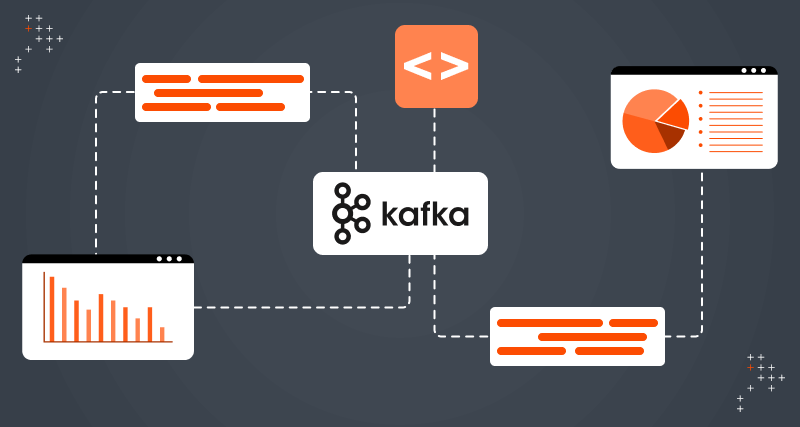Securing access to sensitive data and resources is more important than ever. In fact, there was a sharp incline in data breach incidents between 2022 and 2023. From 1,802 data compromises in 2022, the number rose to 3,205 in 2023, marking a 78 percent increase, according to Security.org.
This alarming trend highlights the growing threats to personal and corporate data, making it imperative to implement robust security measures.
One effective method for managing and securing access within applications is Role-Based Access Control (RBAC). By assigning specific roles to users, RBAC ensures that each individual has the appropriate level of access, thereby reducing the risk of unauthorized data exposure. This approach not only helps to protect sensitive information but also aligns access control with the organizational structure and responsibilities.
To fully appreciate how RBAC works and its significance, it's essential to understand the underlying concepts and how they can be applied in real-world scenarios. Here are the core principles of RBAC and how they can be implemented effectively.
Understanding Role-Based Access Control (RBAC)
Role-based access Control (RBAC) restricts access to certain parts of an application based on the roles assigned to users. Each role is associated with specific permissions, which dictate what actions a user can perform.
For instance, consider an application with three roles: Admin, Editor, and Viewer. The Admin role might have full control over the application, including the ability to create, read, update, and delete content. An Editor might only be able to create and update content, while a Viewer can only read the content without making any changes.
RBAC is particularly important in environments where security and access management are critical. It helps in maintaining a structured and secure access control system that aligns with the organizational hierarchy and business requirements.
Setting Up next-auth In A Next.js Project
To begin integrating Role-Based Access Control (RBAC) with your Next.js application using next-auth, you must first set up next-auth itself. Next-auth is a flexible authentication library built on top of Next.js that simplifies integrating various authentication providers into your application.
1. Install next-auth
Start by installing the next-auth package via npm or yarn.
|
npm install next-auth |
or
|
yarn add next-auth |
2. Configure API Route
Depending on whether you're using the App Router or the Pages Router, you’ll need to create an API route for next-auth. This route will handle all authentication requests. Here’s an example of how to set up the route:
|
// For App Router (app/api/auth/[...nextauth]/route.js) |
|
// For Pages Router (pages/api/auth/[...nextauth].js) |
Explanation
- Providers: This includes Google, GitHub, Facebook, and Email providers. You can add more providers based on your requirements.
- Pages: Customizes the URLs for sign-in, sign-out, error, email verification, and new user welcome pages.
- Session: Configures session management using JSON Web Tokens (JWT) and sets the session expiration to 30 days.
- Callbacks: Custom JWT and session callbacks to attach additional information (like `user.id`) to the session.
3. Create a Login Page
Set up a simple login page that authenticates users using the next-auth `signIn` function.
|
// app/login/page.js or pages/login.js |
4. Configure Session Handling
Next-auth stores session data, including user roles, which can be retrieved and used throughout your application. As shown in the callback functions above, make sure the role information is correctly passed and stored during authentication.
Integrating RBAC With next-auth
Once the next-auth is set up, you can begin integrating RBAC into your application. The key to RBAC is associating roles with users and then using these roles to restrict access to certain pages or API routes.
The next-auth facilitates RBAC by allowing you to store role information in the user’s session and using middleware to protect routes based on this role data.
Middleware Implementation
Middleware is crucial for enforcing RBAC in your Next.js application. It runs before the request is processed by the route, ensuring that only users with the appropriate roles can access certain pages or API routes.
1. Create Middleware: In the root of your project, create a middleware file to handle access control.
|
// middleware.js |
2. Middleware Flow: The middleware checks the user’s session token for their role. If the user attempts to access a route they’re not authorized for, they’re redirected to a “No Access” page or another appropriate route. This centralizes access control and ensures consistency across your application.
3. Dynamic Role Management: If roles change dynamically, ensure your middleware checks for the most recent role data by making necessary API calls to refresh the token or session data before performing the role checks.
By utilizing middleware, you effectively streamline the RBAC process, ensuring that users are directed appropriately based on their roles without needing to manually manage access on every individual page.
Common Pitfalls And How to Avoid Them
Integrating RBAC with next-auth can be straightforward, but there are common pitfalls you should be aware of:
- Incorrect Setup of Providers: Ensure that your providers are correctly configured. Any mistake in setting up client IDs or secrets can lead to authentication failures.
- Session Management Issues: Improper handling of session data can result in users not being recognized correctly. Always ensure that role data is correctly stored and retrieved from the session.
- Middleware Misconfiguration: If your middleware isn’t correctly set up, it may fail to protect routes, leading to unauthorized access. Always test your middleware thoroughly.
To avoid these issues, follow the next-auth documentation closely and test each part of your setup as you go.
Dynamic Role Management
In some cases, roles might change dynamically, requiring the system to adjust permissions on the fly. For example, in a project management application, a user’s role might change from a Contributor to a Manager based on task assignments.
Handling dynamic roles in the next-auth involves updating the session data whenever a role change occurs. This can be done by making an additional API call to fetch the updated role and update the session accordingly.
Testing Your RBAC Setup
Testing is crucial to ensuring that your RBAC implementation works as expected. Tools like Jest and Cypress can be used for unit, integration, and end-to-end testing.
Unit Testing: Test individual functions and components to ensure they correctly handle roles and permissions.
Integration Testing: Test how different parts of your application work together, particularly how role data is passed through your application.
End-to-End Testing: Simulate user interactions and test the entire authentication and authorization flow.
For API testing, tools like Postman can help you verify that your backend is returning the correct role data and that your middleware is correctly restricting access based on these roles.
Troubleshooting And Best Practices
When things go wrong, troubleshooting can be challenging, but there are a few best practices that can help:
Extensive Logging: Implement logging to track what’s happening during the authentication and authorization process. Tools like Sentry can be invaluable for tracking issues in both the front end and the back end.
Step-by-Step Verification: Break down the authentication process into steps and verify each one. This methodical approach can help you pinpoint the issue.
Least Privilege Principle: Always start with the minimum necessary permissions for new users. This reduces the risk of unauthorized access if something goes wrong.
Advanced Use Cases and Scalability
As your application grows, you may need to handle more complex RBAC scenarios. For example, you might have users with the same role but different permissions depending on their department or project.
Backend and infrastructure teams often address scalable concerns, such as managing large numbers of roles and permissions or optimizing performance. Caching strategies and efficient query handling are crucial for maintaining performance as the user base grows.
Integrating next-auth with other authentication providers like OAuth is straightforward, as next-auth supports a wide range of providers out of the box. However, for less common providers, you might need to implement custom logic.
Conclusion
Setting up Role-Based Access Control with next-auth in a Next.js application is a powerful way to secure your application and ensure that users have the appropriate level of access. By following the steps outlined, you can create a robust RBAC system that scales with your application’s needs.
Remember to keep security at the forefront of your implementation by following best practices and regularly testing your setup. With next-auth, you have a flexible and powerful tool that makes managing authentication and authorization in your Next.js applications much easier.
Strengthen your application's security and simplify access management.
Contact our experts to learn more about how next-auth can help you set up effective Role-Based Access Control in your Next.js projects, combining flexibility with security for your users.

S. M. Tashrik Anam, Senior Software Engineer
Tashrik enjoys working on front-end development, particularly in enhancing performance and code quality in frameworks like Next.js and React. He is passionate about learning new technologies and sharing insights through mentoring and writing. Outside of coding, he finds balance through coffee breaks and refreshing walks.

Hanush Kumar, Marketing Associate
Hanush finds joy in YouTube content on automobiles and smartphones, prefers watching thrillers, and enjoys movie directors' interviews where they give out book recommendations. His essential life values? Positivity, continuous learning, self-respect, and integrity.

 We respect your privacy. Your information is safe.
We respect your privacy. Your information is safe.



Leave us a comment